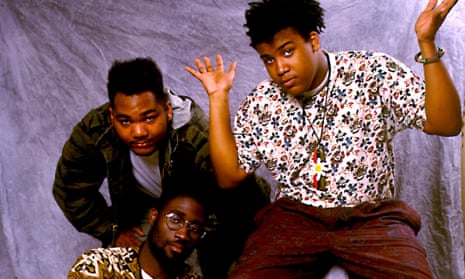In an infamous Newsweek cover story in March 1990, beneath the strapline “Rap Rage”, journalist Jerry Adler laid out the case for the prosecution against the corrupting influence of hip-hop which, even by that stage, had become wearyingly overfamiliar to its many fans. The broad brushstrokes of the charges were aptly satirised later, in the voice of Marge Simpson: “Rap music belongs in the rubbish bin: it encourages punching, boasting, and rudeness to hoes.” But in the midst of this archetypal George Bush Sr-era moral panic, the article made another criticism that sounded rather more accurate. Hip-hop is, Adler wrote scathingly, “music so post-industrial it’s almost not even played, but pieced together out of pre-recorded sound bites”. In the Chicago-based writer Roy Christopher’s Dead Precedents, we have an enjoyable, pithy account of why this isn’t a criticism at all.
Written with the passion of a zine-publishing fan and the acuity of an academic (he is both), Christopher explores the idea of hip-hop as “black cyberpunk”. His argument is that rap and cyberpunk were twin movements, in which technologically liberated renegades created the future by reinventing the past, building new worlds using DIY ethics and freewheeling bricolage. Like hip-hop itself, his book is layered with overlapping references and allusions, quotes and “samples’” proudly standing on the shoulders of giants.
A typical chapter takes us on a tour around four less discussed pillars of hip-hop: recording, archiving, sampling and intertextuality (MC-ing, DJ-ing, B-boying and graffiti writing are the standard quartet) – and draws on reference points as broad as Edward Snowden, Walter Benjamin, De La Soul (pictured) and Blade Runner, to discuss the hacking, reworking and the conflicted relationships rap has with history, memory and the vast libraries of cultural products now available to draw on. Perhaps we all now function in this way – perhaps we are all cyberpunks, constantly reconfiguring an unstable, half-remembered archive of clips, snippets and sounds.
Christopher quotes Adbusters magazine founder Kalle Lasn, who takes this further, and says digital citizens have been brainwashed by consumer capitalism’s onslaught, and all now “speak a kind of corporate Esperanto: words and ideas sucked up from TV and advertising”. This refusal to believe that younger adults have the agency – and cynicism – to critique, let alone transcend, the bombardment of messages thrown at them in the 21st century would at least explain why his magazine is full of sixth-form, Banksy-esque “subvertising”. Christopher knows better than this, and sees the bricoleurs as pioneers, not dupes.
Christopher’s achievement is to avoid making the connections between his two great interests, hip-hop and cyberpunk, seem forced - and to be fair, they really don’t need to be. They emerged in the same 1980s context, in a moment of intense post-industrial decline and technological upheaval; they are both reliant on a bedrock of “codes and signs to hack [and] meanings to hijack” – as acts of subversion, whether playful or polemical. There is even the Afrofuturist style of early hip-hop: its goggles, gloves, mohawks and leathers; looks “cobbled together from the fragments of past fads and fashions” – emerging in Robert Moses’s New York, a South Bronx of broken windows and social decay, devastated by “highway-bound white flight”. When Ronald Reagan visited on the campaign trail in August 1980, he said the area looked like it had been hit by an atom bomb. Looking back, it makes a certain amount of sense that the first two Mad Max films had come out either side of this visit and that year’s epochal US presidential election.
Dead Precedents is almost pamphlet-length, barely 150 pages long – although accompanied by extensive notes, bibliography and further listening, appropriately – but it is no less emphatic in its argument that the 21st century truly began with these twin movements. And even if the cyberpunk moment encapsulated in the thrilling writings of William Gibson, Rudy Rucker and Bruce Sterling has passed, its spirit lives on in the Afrofuturist R&B of Janelle Monáe or the beats of Flying Lotus, the films of Boots Riley, the Afropunk festival, and a thousand other bionically blooming flowers of hip-hop culture. And this is before we even contemplate what the young people growing up on Black Panther will go on to create. Grandmaster Flash was “hip-hop’s first hacker, its first cyberpunk”, Christopher contends at one point; he will not be the last.
Dan Hancox is the author of Inner City Pressure: The Story of Grime (HarperCollins)

Comments (…)
Sign in or create your Guardian account to join the discussion